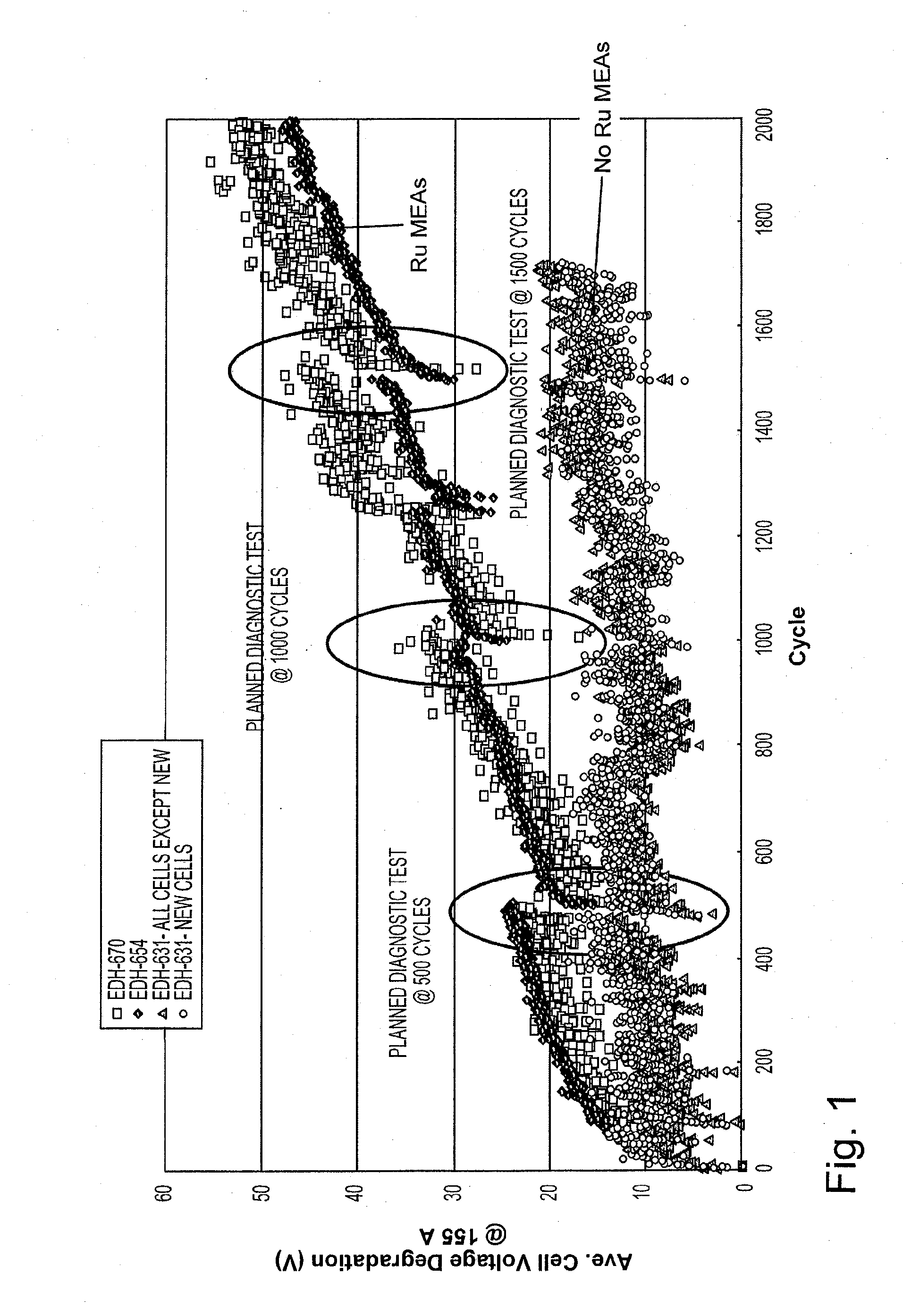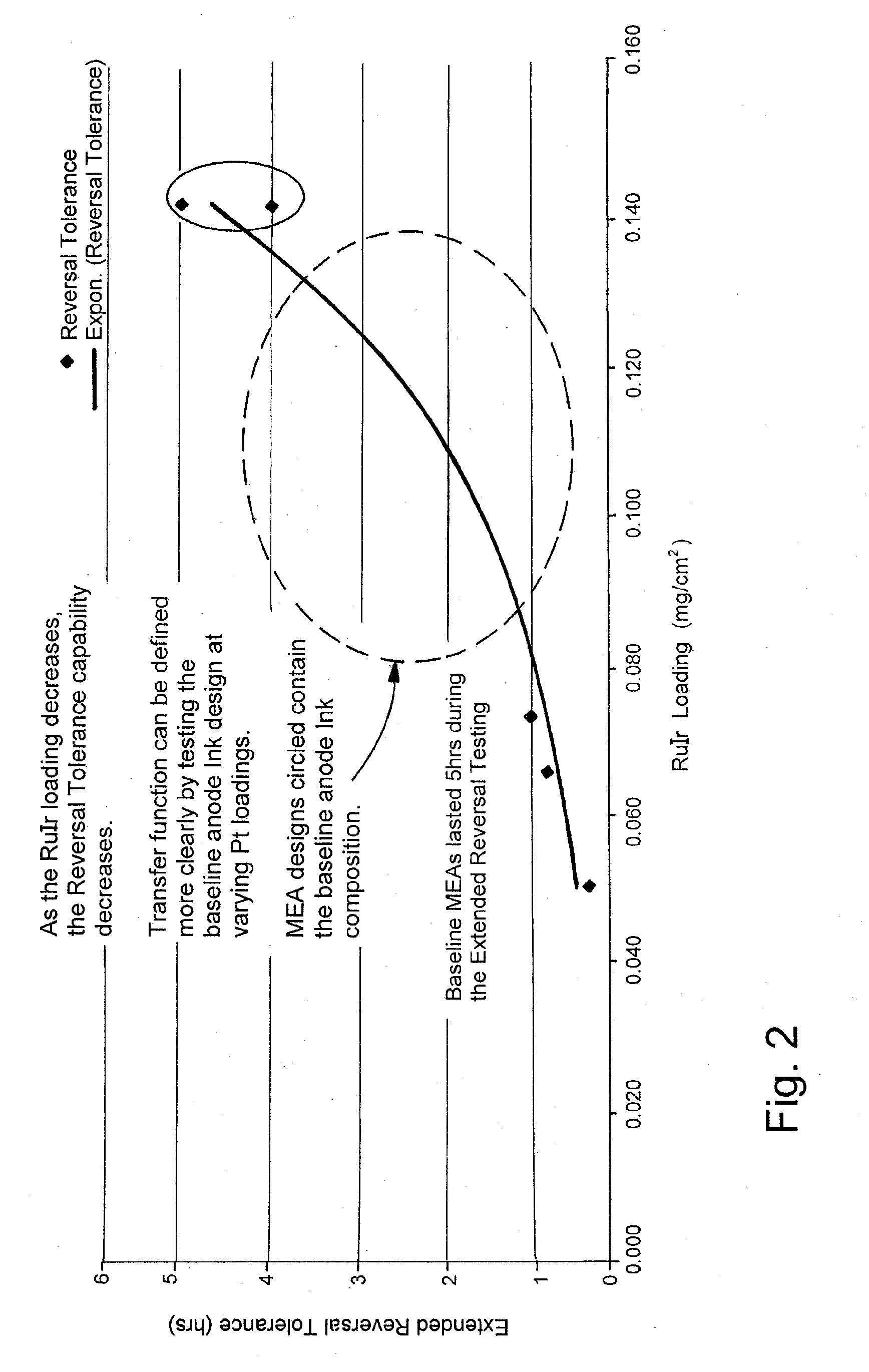Reversal tolerant membrane electrode assembly for a fuel cell
a fuel cell and membrane electrode technology, applied in the direction of cell components, electrochemical generators, coatings, etc., can solve the problems of damage to the anode, and fuel starvation at the cell outlet, and achieve the effect of satisfying reversal toleran
- Summary
- Abstract
- Description
- Claims
- Application Information
AI Technical Summary
Benefits of technology
Problems solved by technology
Method used
Image
Examples
Embodiment Construction
[0020]A fuel cell comprises a membrane electrode assembly, i.e., anode, cathode and an electrolyte membrane arranged between the anode and the cathode. In order to overcome the problems inherent in reversal, such as damage to the anode due to carbon oxidation, and to achieve reversal tolerance while decreasing long term degradation due to cross-over of Ruthenium from the anode to the cathode, the present invention provides an anode with an oxygen evolution reaction catalyst. The catalyst can be any suitable metal compound, but is generally a Ruthenium compound. Among the Ruthenium compounds preferred is RuIrOx, where x can vary depending on the respective valences of Ru and Ir. The parts of the MEA that do not contain the catalyst are not expected to suffer degradation of Ruthenium cross-over, so that overall degradation of the cell will be diminished.
[0021]During reversal, the Pt / Ru regions electrolyze available water and pass the majority of the current thereby protecting / preventi...
PUM
| Property | Measurement | Unit |
|---|---|---|
| width | aaaaa | aaaaa |
| width | aaaaa | aaaaa |
| areas | aaaaa | aaaaa |
Abstract
Description
Claims
Application Information
 Login to View More
Login to View More - R&D
- Intellectual Property
- Life Sciences
- Materials
- Tech Scout
- Unparalleled Data Quality
- Higher Quality Content
- 60% Fewer Hallucinations
Browse by: Latest US Patents, China's latest patents, Technical Efficacy Thesaurus, Application Domain, Technology Topic, Popular Technical Reports.
© 2025 PatSnap. All rights reserved.Legal|Privacy policy|Modern Slavery Act Transparency Statement|Sitemap|About US| Contact US: help@patsnap.com



